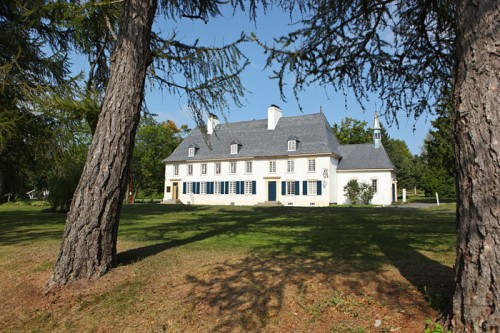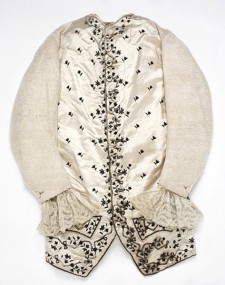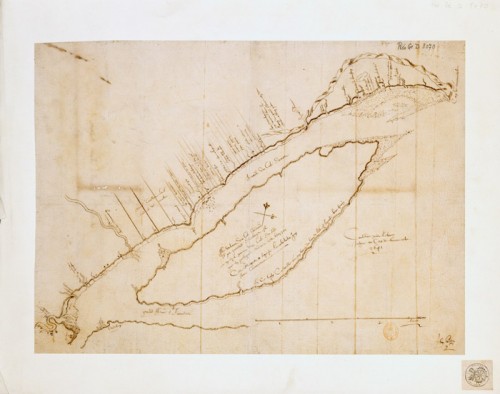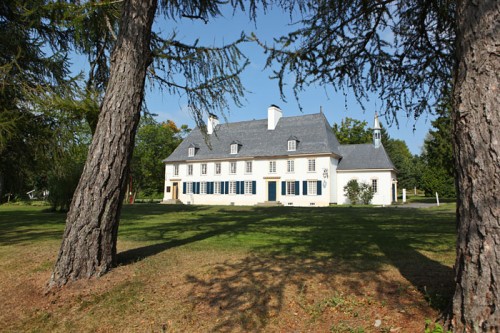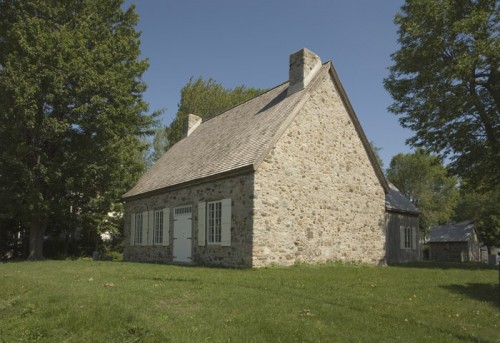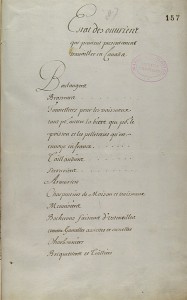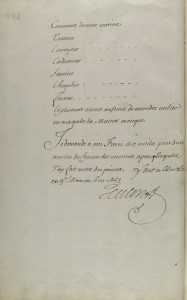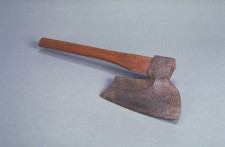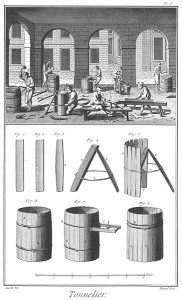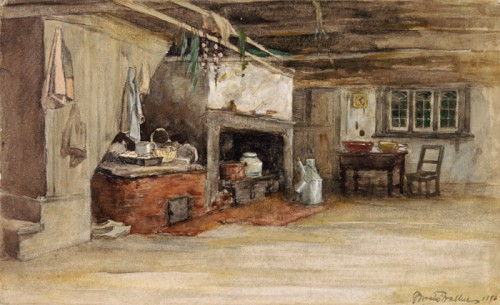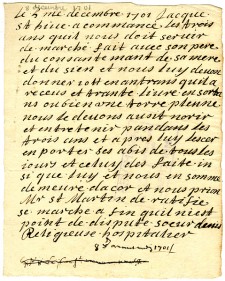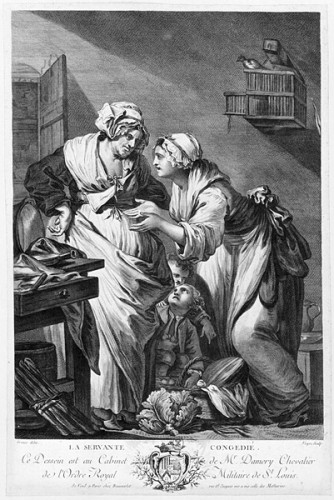-
- Introduction
- Colonies and Empires
- The Explorers
- Jacques Cartier 1534-1542
- Samuel de Champlain 1604-1616
- Étienne Brûlé 1615-1621
- Jean Nicollet 1634
- Jean de Quen 1647
- Médard Chouart Des Groseilliers 1654-1660
- Pierre-Esprit Radisson 1659-1660
- Nicolas Perrot 1665-1689
- René-Robert Cavelier de La Salle 1670-1687
- Charles Albanel 1672
- Jacques Marquette 1673
- Louis Jolliet 1673-1694
- Louis Hennepin 1678-1680
- Daniel Greysolon Dulhut 1678-1679
- Louis-Armand de Lom d’Arce, baron Lahontan 1684-1689
- Pierre de Troyes 1686
- Pierre Le Moyne d’Iberville 1686-1702
- Antoine Laumet dit de Lamothe Cadillac 1694-1701
- Pierre Gaultier de Varennes et de La Vérendrye 1732-1739
- Economic Activities
- Population
- Daily Life
- Heritage
- Useful links
- Credits
Population
Social Groups
What was New France’s society like? Did it reflect French society under the Ancien Régime? Or was it different? If so, why was it not identical to the society from which it originated? In this article on social groups, Arnaud Bessière answers these questions and many others.
The author paints a portrait of the colony’s population at different points in time and covers each social category: seigneurs, merchants, artisans, peasants and servants. He reminds us of their importance and examines their way of life, duties and responsibilities. We discover that there were significant disparities within each social category, as was the case in France. For example, some of the seigneurs tried to reproduce seigneurial practices found in France, while others barely survived on their lands. As for the merchants, some made great fortunes, while the majority scraped a living from small businesses.
Arnaud Bessière’s article offers insight into the hierarchical structure of New France’s society and of the various social groups. It highlights the way a new society — distinct from that of France — progressively took shape.
The Seigneurs (show)
The seigneurial system: a means of populating the colony?
In 1627, Cardinal Richelieu founded the Compagnie des Cent-Associés (Company of One Hundred Associates), also called the Compagnie de la Nouvelle-France (Company of New France). The company received a mandate to populate the colony and evangelize its inhabitants. In return, it was granted full ownership of the territory, “in all fairness”, and full seigneurial rights, as well as a perpetual monopoly on the fur trade. That is how the seigneurial system was officially established in New France. This system, which turned Canada into an immense seigneury, was in place for over two centuries.
The seigneurial system is an institutional form of land distribution and occupation. Its introduction in North America was supposed to promote settlement and the colony’s development. For various reasons, however, including the difficulty of financing the enterprise and the taking of Quebec City by the Kirke brothers in 1629, the Compagnie des Cent-Associés did not grant its first seigneury until 1634. On January 15 of that year, Jean de Lauson, the company’s first director and future governor of New France (from 1651 to 1657), granted Robert Giffard, a native of the Perche region of France, a fief that would later be called the Beauport seigneury. The only seigneuries that existed before that date belonged to the Jesuits and Louis Hébert, a pioneer and apothecary. Between 1634 and 1663, the Compagnie des Cent-Associés subcontracted the distribution of 104 seigneuries to 69 seigneurs, including seven religious communities. After 1663, the Crown conceded over 100 others.
When seigneurs received their seigneuries, it was their duty to populate them by granting lots, called censives, to settlers who requested them. People who were granted land became censitaires (tenants on the seigneury). Seigneurs initially recruited censitaires by promising to cover the cost of their journey from France, but few lay seigneurs fulfilled that promise, largely because the crossing was expensive.
Some historians have suggested that the seigneurial system was a means of populating the colony, while others disagree. The State did use the system to speed up colonization, but, with the exception of the religious communities, before 1663 the seigneurs brought few people to Canada.
Who were the seigneurs?
The first seigneury owners were, for the most part, nobles and religious communities. Over time, as seigneuries were sold or inherited, they changed hands and were divided up. In the late eighteenth century, most of them were in the hands of the middle class, of people of French or British origin.
Under the French regime, the Canadian nobility accounted for only 4% of the population, just over 200 people. It was formed essentially through immigration, the ennoblement of people born in Canada being quite secondary. The mortality rate among male nobles was very high because most men opted for military careers. The fertility rate was also very high, but it was countered by high infant mortality attributable to wet-nursing, a frequent practice in this social category. Nobles usually married members of their social group, although many young women chose to take the veil, rather than marry. They played an important role in the colony’s religious communities.
Nobles preferred to live in urban areas and rarely visited their seigneuries. They lived in richly furnished mansions, and wore wigs and luxurious clothes. Since their rank prevented them from doing manual labour or entering professions that were considered degrading, the majority of men chose military service, which, they believed, would ensure their subsistence and allow them to fulfill their main duty: to serve the king. Enlistment in the military also strengthened the families’ identity as members of the nobility. It was not surprising, therefore, to find many nobles among the officers of the Carignan-Salières Regiment or in the navy. The civil or military officers’ salary, deemed insufficient, was not, however, their only source of income. Whereas in France the nobility was forbidden from engaging in commercial activities, in Canada, starting in 1685, that was allowed, and it turned out to be the only sector where a substantial accumulation of capital was possible. Nobles made fortunes managing fur trading posts in the West. That advantage came at a price, however, as the men had to leave their wife and children behind. In such cases, the women took over the management of the family’s assets.
Despite its relative poverty, compared to that of France, the Canadian nobility was very stratified. At the top of the hierarchy were the Vaudreuil, Ramezay and Longueuil families, symbols of the colonial elite who accumulated honours and concurrently held the most lucrative positions in the army. Then came the families that occupied important administrative or military positions. Finally, at the bottom of the pyramid, there was a group that was forced to live on its lands. Impoverished as the lands were divided up generation after generation, it increasingly resembled the peasantry.
The unequal distribution of seigneuries
The possession of a seigneury conferred real prestige and was an indication of social success. But was it a lucrative enterprise for the seigneurs? Yes, if they managed to get the land under production by recruiting settlers, building a mill and maintaining the roads. But, in the seventeenth century, most lay seigneurs relied on natural population growth, rather than recruiting settlers in France. Religious communities took a different approach, and their seigneuries generated a significant income. Seigneuries that belonged to lay persons, in particular, did not become profitable until the late eighteenth century.
Seigneuries were distributed very unequally. In 1663, there were 62 lay seigneurs, and 84% of them were nobles. At the time, the Compagnie des Cent-Associés granted twelve million arpents (a measure of length and area), and almost half of them belonged to a single seigneur, Jean de Lauson Jr.’s widow. Fourteen seigneurs shared 45% of the colony’s land area, and a group of seven families, in particular, stood out from the rest: the Aillebousts, Bourdons, Giffards, Godefroys, Lausons, Legardeurs and Leneufs.
In 1672, Intendant Jean Talon oversaw the most important distribution of seigneuries under the French regime. He granted over 40 of them in the Montreal and Trois-Rivières regions, and convinced 25 officers, lieutenants and ensigns of the Carignan Regiment to stay in the country and accept a fief on the shores of the Richelieu River. In the first half of the eighteenth century, Vaudreuil (1703–1726) and Beauharnois (1726–1747) extended the colonization zones as far as the Lac des Deux-Montagnes, the Outaouais and Beauce regions, and Lake Champlain. At the end of the French regime, the colony’s 70,000 inhabitants were spread out over about 250 seigneuries of varying size and population. Some of the seigneuries were only a few hundred arpents and others several hundred thousand. The territory they covered extended from the Malbaie region to the border of present-day Ontario.
The seigneurs’ obligations and rights
Obligations
All seigneurs had obligations to the State and their censitaires. The oath of fealty and homage was one of their primary duties to the State. By taking the oath, they made a solemn commitment before the intendant — the king’s representative — to fulfill all their seigneurial obligations. They also had to submit to the intendant an aveu et dénombrement, which included a description of the lands granted on their seigneury, the names of the censitaires, the acreage under cultivation and the amount owing in taxes. This report was meant to show the colonial authorities that seigneurs were fulfilling their obligations adequately. In addition, seigneurs had to reserve the oak wood from their seigneuries for the king, for building ships. Finally, if their property was sold, the buyer had to pay the State the droit de quint, a sales tax equal to one-fifth of the value of the fief. This measure was intended to limit sales and make speculation more difficult.
Seigneurs had to have “a hearth and home” on their seigneuries; they had to possess an inhabited manor there. They were not obligated to live there year-round — most were, in fact, absent from their seigneuries — but the manor had to at least be occupied by someone in charge. However, the seigneurs’ most important obligation was the granting of land to settlers who requested it. They also had to build and maintain a wheat mill to meet the settlers’ needs. Lastly, like the censitaires, they had to make contributions to the Church and to help cover the cost of roads.
Rights
To be a seigneur meant, above all, that one had rights. First, there were honorific rights. Seigneurs could receive a free pew at church and had the privilege of sitting near the priest. Their censitaires also paid civil tributes to them, for example, on the occasion of the plantation du may (planting of the May tree). These honorific rights were a public attestation of the seigneurs’ status in the social hierarchy.
The other rights, called onerous rights, were specified in the deed of concession and corresponded to income that was both real and symbolic. Foremost of these was the cens, an annual imprescriptible tax that affirmed that the seigneur was the eminent owner of the censitaire’s land. Although this right was more symbolic than lucrative, it was at the root of the inegalitarian relationship between seigneurs and censitaires. Seigneurs also collected the rente, an annual tax that censitaires had to pay in cash or kind. It usually amounted to 20 sols per arpent of frontage. Until enough land could be cleared to provide adequate pasture for the livestock, censitaires needed access to the commune. In such a case, the seigneur could charge a fee. If censitaires sold the land they were given, they had to pay the seigneur the lods et ventes tax, which was equal to one-twelfth of the lot’s value. This tax was also meant to render land transfers more difficult. In addition, the droit de retrait gave the seigneur 40 days to buy back land that was sold at too low a price.
Seigneurs also had a multitude of privileges. The droit de réunion allowed them to repossess land that had been granted if it was not under cultivation within a year. They could also claim a share of the product of the fishery. The droit de réserve gave them the right to cut firewood on their censitaires’ land, and to take the materials needed to build a church, manor or mill. The droit de banalité gave them a monopoly on the construction of flour mills on the seigneury and made it compulsory for the censitaires to grind their grain there upon payment of a fee. Seigneurs were also free to impose corvées, and they did so three or four times a year. These were days of compulsory work devoted either to the maintenance of the lands and buildings that belonged to the seigneur, or to the maintenance of the common grounds, roads and buildings. Finally, given their droit de justice, seigneurs could settle civil disputes that arose within the boundaries of their property, but few of them built a court.
Canada’s seigneurial system differed little from that of France. In both cases, it was a system of land ownership that allowed seigneurs to collect part of what the peasants produced without making an investment, unless they built a mill. The tax system that was in effect was similar to that of the feudal system. However, that does not mean that all peasants were overburdened with taxes; there were lands that were highly profitable and others on which people struggled to survive. Seigneurs often met with resistance from censitaires when taxes were due, especially if they demanded more than their share or neglected their obligations. On the whole, many historians view the seigneurial system as a source of social inequality and stress that the seigneurs’ power to claim agricultural surpluses for themselves was an exaggeration.
Middle-Class Merchants and Traders (show)
A commercial hierarchy
Merchants and traders supplied and distributed most of the European products. There were Canadian merchants and French merchants. In the seventeenth century, French merchants were in the majority in the St. Lawrence Valley, and in the century that followed, the situation was reversed. Between 1717 and 1745, 38% of Quebec City’s merchants were agents of French firms and 16% were merchant officers. The other 46% were merchants born in the colony.
The wealthiest people in the country — traders in Quebec City and Montreal who imported and exported goods — were at the top of the commercial hierarchy. They had ties to several firms in France, both Catholic and Protestant. The importing side of their businesses netted “profits of 20% to 30% in times of peace and over 100% in times of war”, according to historian Louise Dechêne. Due to their wealth and influence, these traders clearly stood out from the rest of society. They received most of the appointments to positions of rank in the city’s militia and most of the seats on Quebec City’s Conseil supérieur (supreme council), as well as other official honours that brought them closer to the nobility.
The retailers in both of the colony’s main cities were a strong second. They received the traders’ merchandise and distributed it throughout the St. Lawrence Valley. Each major city had an area — la bourse (the market) or le change (the exchange) — where these merchants met to do business.
At the same level as the retailers, there were marchands voyageurs (travelling merchants) and outfitters, who bought from traders the supplies they needed for trade with Aboriginal peoples. They dominated the fur trade in Montreal. In the seventeenth century, for the most enterprising members of the lower social classes, the fur trade could be a means of climbing the social ladder. The marchands voyageurs can be placed in two categories: large merchants, such as Alexis Lemoine Monière, who hired a sizeable staff each year for the fur trade, and small merchants, who hired only a few engagés (general labourers).
Further down on the commercial hierarchy, there were lenders, small merchants and merchant-craftsmen. They supplied merchandise to rural areas in the St. Lawrence Valley and provided a link to the outside world. Their numbers grew as land was cleared and the population of the seigneuries increased.
Finally, at the bottom of the ladder, there were merchants who ran their businesses alone and did not hire engagés.
On the whole, despite the considerable differences in wealth that characterized this group, most of its activities revolved around the fur trade. Many merchants made a fortune in the fur trade, the main source of income in the colony, yet they lived modestly, compared to the nobles.
How the merchants lived
Like the seigneurs, merchants usually married within their social group. Family alliances helped consolidate the community and allowed some people to climb a few steps on the social ladder.
The wealthiest traders possessed vast stone manors with several rooms. Their attachment to France was reflected in the Parisian-style furnishings and a taste for intimate interiors, popular in eighteenth-century France. Merchants’ houses also featured elements that were specific to the colony, such as steep roofs, and had iron stoves and caribou skins.
In the seventeenth century, merchants lived in beautiful, comfortable homes whose style resembled that of peasants’ homes. These masonry homes had views of Place Royale in Quebec City or the market in Montreal, about six rooms and several cabinets. The stockroom was on the second floor and the store usually on the ground floor. Early in their careers, merchants had homes that were almost as sparse as those of the lower social classes, but they soon acquired items that corresponded to their level of wealth. The wealthiest ones had abundant furniture, clothing, utensils and dishes, but the presence of silverware, well-stuffed mattresses, tapestries and at least one iron stove, an essential element of comfort that ordinary people could not afford at the time, were a clear indication of a certain material success.
Unlike their counterparts in France, Canada’s merchants invested little in land. When men were away on business or the heads of families died, their wives sometimes took over. Marie-Anne Barbel is a good example. She was married to Jean-Louis Fornel, a middle-class merchant, and when he died, she took over his activities. She looked after the store, obtained concessions of fur trading posts, at Tadoussac in particular, and continued to run a pottery and brick-making shop in Quebec City. To ensure their succession, merchant families sent their sons to school until the age of 14 or so, and encouraged them to do an internship at one of the trading posts in western Canada and to develop their skills by working with a merchant in Canada or France.
Merchants made a serious effort to accumulate wealth and gain respect. They were rarely involved in the scandalous and much-talked-about affairs of the officers and certain nobles. They generally led a quiet life, took part in public affairs, willingly participated in parish activities and did not hesitate to make financial contributions to the parishes.
The merchants and traders of Louisiana and the Illinois Country
There were few merchants and traders in Lower Louisiana and the Illinois Country. They derived their wealth from land ownership, livestock breeding and the cultivation of crops for the export market. Their fortune and social status were closely linked to the number of slaves they possessed.
Just like in the St. Lawrence Valley, their homes reflected their social status and offered a material comfort close to that enjoyed by the elite. Well off, merchants and traders carried walking sticks with pommels, and gold or silver snuffboxes, and owned porcelain plates and silver utensils. If they cultivated their relations with the civil and military authorities, they could aspire to various management positions. They thus dominated the assemblée des habitants (people’s assembly) and were appointed or elected militia officers, church wardens, tithe collectors or syndics.
Shopkeepers and Tradespeople (show)
Shopkeepers and tradespeople offered most of the goods and services that were essential to the population. They usually lived in Montreal and Quebec City, the main urban centres. In rural areas, where the population was dispersed, they were less in demand because people made most of their equipment themselves or borrowed their neighbours’.
The country’s first artisans were engagés hired to clear land. Those who decided to stay in Canada at the end of their three-year engagement usually chose to live in the city, to open a shop and offer their services. Meeting demand as the population grew, they represented the new generation that would ensure that trades were passed on.
The diversity of the trades
Artisans practised a multitude of trades. In great demand in a country where everything was yet to be built, masons, stonecutters, joiners and carpenters formed the largest contingent of artisans in the colony. They helped build public buildings and convents, as well as fortifications, mills, small boats and private residences. As for the furniture that ensured the material well-being of the colony’s inhabitants, it was made by joiners. Coopers, whose trade was quite lucrative, can be included in this group. They made the principal containers used at the time: barrels and kegs used to keep and transport alcohol, oil, fish, flour, peas and other products.
The second most important group was composed of metal workers: blacksmiths, edge-tool makers, cartwrights and wheelwrights, makers of pots and pans, locksmiths, gunsmiths and armourers. Of all of these tradesmen, blacksmiths were the most versatile. Equipped with a fireplace and bellows, they could also double as edge-tool makers, armourers and locksmiths. Metal workers had skills that were very useful to people in rural areas, for whom they made or repaired farm implements. But they also served merchants and voyageurs, who employed them at trading posts to make tools, and repair or assemble rifles, which were indispensable.
The physical strength these trades required was less essential to artisans in the food trades, such as butchers and bakers, two professions that the State regulated and watched closely to ensure that communities had adequate supplies. There were also millers, flour merchants, and various textile, leather and clothing workers, including weavers, clogmakers, tailors, seamstresses, and tanners, who transformed skins into leather for shoemakers.
Finally, the colony also had a few specialized artisans who practised “luxury” trades, such as wigmakers, sculptors, tapestry makers, silversmiths and goldsmiths. However, there was not much demand for their services in Canada, since habitants accounted for the majority of the population, and they had neither the need for such services nor the means to pay for them. Nevertheless, specialized artisans were useful to a few seigneurs, nobles and senior officials who wished to distinguish themselves from the people of limited means and to lead more or less the kind of life they had left behind, or live the way people were living in France at the time.
The transmission of skills
In the colony, three elements made it possible to guarantee the continuity of specialized trades: school, transmission of skills within the family and apprenticeships.
Under the French regime, there were two schools devoted exclusively to training young people in specialized trades. One, known as Saint-Joachim, was located near Quebec City, on the Beaupré seigneury, which was acquired in 1662 by Monseigneur de Laval and subsequently turned over to the Séminaire de Québec. It took a while to get the institution off the ground; in 1685, only 12 of its 31 students were learning a trade. In addition, since the school was too far from the city, it became increasingly difficult to recruit apprentices and teachers, who were in great demand in urban areas. In 1705, the institution apparently became a school of agriculture. Its students worked in the fields between two reading and writing courses.
The other school was in Montreal. Run by the Charron brothers, it opened its doors in 1694. It was part of the hospice founded two years earlier by the Brothers Hospitallers of the Cross and of St. Joseph, whose founder was François Charon. The institution, which later became the Montreal General Hospital, helped the most destitute and taught children a trade for which they had some aptitude. The problems and quarrels within the institution, as well as its founder’s death in 1719, led to its demise, and it closed its doors in 1747. The Grey Nuns took over, but they cared only for the sick and the poor.
The family was the second place where skills were transmitted, and probably the most common. Family businesses were the norm in certain trades, such as the food trades. Specialized skills were transmitted directly from father to son, or indirectly from father to son-in-law or between brothers-in–law. It is difficult to evaluate the family transmission system because it existed outside the official contexts. It did last, however. That much is known. And it gave rise to veritable dynasties of artisans, such as the Baillargés, who were architects.
As for apprenticeships, contracts signed before notaries provide a good deal of information on this means of transmitting skills. They offer greater insight into the apprentices’ experience. As was customary at the time, master artisans were expected to look after their apprentices like “a good father would”. This meant ensuring that they had enough to eat, seeing to their religious instruction, keeping a watch on the company they kept and punishing them if necessary. New apprentices were 16 years old on average, and their apprenticeship varied from two to six years, depending on the trade. Artisans that practised trades requiring a certain amount of physical strength, such as blacksmiths and carpenters, took on older apprentices, but the apprenticeship was shorter. Younger apprentices were usually placed with master harquebusiers, wigmakers, shoemakers or locksmiths. These trades were more sedentary and less demanding physically but required a longer apprenticeship. Contrary to the practice in France, apprentices could receive wages in addition to meals. They were paid in merchandise such as tools or clothing, or in cash, about 50 livres per year of service.
Apprentices often worked more than 12 hours a day, six days a week, and their duties were rarely specified in the agreement. They often had the same duties as servants, who were expected to prepare the workshop each morning and clean it at the end of the day. According to many historians, apprentices had a paternalistic relationship with their masters, but that did not prevent them from being abused and mistreated.
Having completed their apprenticeship, young men could offer their services as journeymen or ordinary artisans and, later, as masters with their own workshops. However, to practise a trade or become a master, it was not essential to do an apprenticeship; the trades were open to everyone who possessed professional skills.
Greater freedom of practice than in France
Artisans had much greater freedom of practice in Canada than in France. The first artisans who arrived in the colony tried unsuccessfully to introduce the French system of trade guilds. Intendant Jean Talon refused to accept such organizations, which had committees of sworn members that dictated the rules of apprenticeship, controlled the hiring process and imposed the creation of a masterpiece on journeymen who wished to become masters, in addition to charging them a fee. Since there was an urgent need to populate the St. Lawrence Valley, the intendant put an end to all attempts to organize guilds in 1666. From then on, anyone who practised a trade in the colony for six consecutive years could become an artisan. It was therefore possible to practise a specialized trade, with the exception of surgery, without going through the colony’s apprenticeship system. Talon’s decision was intended to attract skilled workers to the colony, to encourage them to settle and to meet the growing demand for certain trades that became increasingly rare later on, particularly in shipyards and the Forges du Saint-Maurice.
The artisans’ standard of living
In the eighteenth century, 50% of the artisans in Quebec City and 70% of those in Montreal owned their homes. Nevertheless, there were notable differences in their wealth. Ironworkers generally lived well and, in both Quebec City and Montreal, blacksmiths were the wealthiest artisans. Coopers, masons, tanners, carpenters and joiners also managed well. The clothing trades — tailoring, sewing, wigmaking and shoemaking — were the least lucrative. In Quebec City, in particular, these artisans struggled to make a living, and many of them needed to supplement their income. Some doubled as innkeepers in their spare time, by renting one or two rooms in their home to travellers, and others offered their services as handymen on a daily basis.
In the construction sector, the situation varied considerably from one season and time period to another. The construction trades were greatly favoured in the eighteenth century, compared to the previous century, due to major works such as city fortifications and shipbuilding. On the other hand, there were always periods of unemployment brought on inexorably by winter. In this respect, the construction artisans’ situation was similar to that of day labourers, as Intendant Champigny observed: “True, workers’ wages are high, but it is also necessary to consider the fact that they can only work five months of the year because of the rigour of winter and that, during that time, they must earn enough to get them through the other seven months.”
To remedy this, many construction artisans sought to make up for lost wages by practising another trade. It was therefore not uncommon to find joiners who claimed to be carpenters or masons as well, and vice versa. Whatever the extent of their wealth or their job, these men generally worked under difficult conditions. Despite considerable differences in wages, they all worked from sunrise to sunset and rarely had days off.
The Habitants (show)
In Canada, the French term habitant means not only inhabitant, but also farmer. In most cases, the colony’s first habitants — in both senses of the word — were former engagés or soldiers, who accounted for about 80% of the immigration to Canada under the French regime.
Agricultural activities
The habitants’ work was closely linked to the cycle of the seasons. In the winter, habitants looked after their livestock, which usually consisted of two to four dairy cows, one or two teams of oxen, at least one breeding boar, several sows, about a dozen hens, a few sheep and perhaps a horse. They also cut down trees to clear land for cultivation and chopped wood for the fire. In the spring, they spent a few days finishing the ploughing begun in the fall. At the beginning of May, they sent their animals into the fields or the commune’s common grazing lands, and at the end of the month, they began broadcasting their wheat and, sometimes, a bit of oats, barley and rye. The sowing took about three weeks. During that time, the farmer’s wife and children looked after the kitchen garden. After weeding it, they planted carrots, lettuce, onions, turnips and cabbage, as well as pumpkins and melons, which Aboriginal people introduced them to. In early June, as summer approached, habitants began to do maintenance on their buildings. At Saint-Jean-Baptiste time (feast day celebrated on June 24), they had a short break, for they would begin haying at the end of July, and that lasted about three weeks. Used to feed the animals, the hay was stacked and placed under shelter for the winter. The wheat, a staple food in the colony, was harvested at the end of August. It was cut with a sickle and stored in sheaves in the barns. It would be threshed with a flail at the end of the season, sometimes as late as December. If other grains were cultivated, they were harvested afterwards. Peas, consumed by both people and animals, were harvested last. Right after — in late September and early October — habitants ploughed their land once again and prepared for another winter. They brought their livestock indoors, placed their firewood under shelter, and stored meat and other foodstuffs in the attic or the cellar.
The censitaires’ duties
As soon as they received free land from the seigneur, censitaires had several duties to fulfill. Their primary duty was to cultivate the land and “have hearth and home” on it, that is, live there. If the land was not under cultivation within a year, the seigneur had the right to repossess it (the droit de réunion). Habitants also agreed to pay the seigneur various taxes. First, there was the cens, an annual imprescriptible tax that was more symbolic that lucrative because it varied from two to six sols. Then there was the rente, which was set at 20 sols per arpent of frontage and had to be paid every year. If censitaires sold their land, they paid the seigneur the lods et ventes, a tax equivalent to one-twelfth of the sale price. In addition, habitants had to grind their wheat at the seigneurial mill and pay a milling fee by giving the seigneur the fourteenth minot (14 minots for every 200 minots of wheat). If they fished, they agreed to give the seigneur one-thirteenth of the product of the fishery. Finally, they were obligated to do one to four days of compulsory work, called corvées, each year during the sowing, haying or harvesting season.
The importance of the family
As a general rule, Canada’s population married late in life. Given the colony’s economic situation, young people could not start a family earlier, just like their counterparts in France. Men married for the first time around the age of 27, and women, between the ages of 20 and 24. People usually married a neighbour, but the wealthiest inhabitants of rural areas did not hesitate to go farther afield to find a spouse whose fortune was comparable to theirs. Families had nine children on average, but only five of them lived to adulthood.
Rural families were generally very close-knit, and its members helped one another at various times, especially when there was work to be done. Indeed, families produced just about everything they needed, thanks to this spirit of collaboration. Farm surpluses were sold to allow families to buy the goods and equipment that were essential to their operations, since families were a veritable production unit. The family was also the place where children learned to work, and received moral, religious and civic instruction.
The death of a spouse was a source of instability in the family. In the eighteenth century, close to half the children under the age of 18 lost a parent. People remarried quickly because it was difficult to raise a family alone, and almost impossible to cultivate land, especially if the children were young. Remarriage explains why natural population growth was so high in the colony, 2.5%.
The rural family’s home was also the most suitable place for socializing. At the time, in France, peasants gathered in stables to listen to stories or sing while working. Canadian get-togethers were more recreational and social. People played cards and, despite the rarity of musical instruments, sang and danced, even though the clergy disapproved. In a pastoral letter dated February 16, 1691, the bishop of Quebec City, Monseigneur de Saint-Vallier, exhorts “confessors to keep penitents away from community dances, which are gatherings of perdition”. Board games and parlour games — galet (a form of shuffleboard played on a table), trictrac (an old form of backgammon), skittles and checkers — were popular at get-togethers, but not as popular as card games.
The habitants’ character
To the administrators of New France, habitants never complied sufficiently with the law, and to the clergy, they were never religious enough. The colony’s first habitants were neither angels nor demons. As was the case in Europe, habitants, nobles and the middle class turned to the courts to settle acreage disputes and contract violations, and to deal with violations of moral standards. Whether the offences were serious or minor, those guilty were taken to court and punished, although, on the whole, less severely than in France. Many of the cases heard by the legal authorities concerned habitants’ insubordination towards authority, as well as verbal or physical violence between neighbours due to “boundary disputes”. More often than not, the punishment for such misdemeanours was a fine. The habitants’ refusal to comply with fur trade regulations, pay the tithe or participate in the compulsory corvées has led some to claim that Canadians were disobedient and rebellious. Perhaps they were simply reacting to behaviours considered abusive.
Engagés and Servants (show)
What is an engagé?
Engagés were immigrants who offered their services to employers in the colony. They were also called trente-six mois (thirty-six months) because they were usually under a three-year contract. They were generally young (in their twenties), single and from western France. In return for their work, they received room and board, clothing and a salary, in addition to being reimbursed for the cost of the trip to Canada. Sometimes, they received an advance before they left France. Employers were also responsible for covering the cost of their return, but after 1665 this obligation was transferred to the engagés.
Engagés were handymen or skilled workers, and most of them arrived before 1660. They accounted for about 20% of the 25,000 or so Frenchmen who spent at least one winter in Canada before 1760, and close to four-fifths of them (4,000) arrived in the seventeenth century, when labour was indispensable to the colony’s development. They were the second-largest group to spend time in Canada, next to military personnel. About half the engagés returned to France at the end of their work term.
Engagés also worked as domestiques and, as such, could be household servants, personal assistants, servants in religious communities or farm hands. Servants accounted for slightly less than 15% of the colony’s population in 1666 and little more than 5% in 1681 (about one servant for every 20 inhabitants). The workforce grew over time, and, in the last quarter of the seventeenth century, Canadian workers gradually replaced the trente-six mois. That led to a greater diversification of the category of domestic workers, due to the arrival of young people and women.
Who were the employers?
Servants were found in almost all levels of society, but especially in the homes of civil and military officers, religious institutions, and the homes of artisans and habitants. Since habitants represented over three-quarters of the population, they hired they most engagés. Given the importance of agriculture to the economy and the great demand for labour, close to one-third of the habitants hired farm hands in the seventeenth century. However, few of them had the means to employ more than one. At the moment, there is no data on the number of employers in the eighteenth century, but over 16% of rural households in the Montreal region had at least one servant.
Employers had to fulfill certain obligations, most of which were specified in the contract. They were to treat their servants as a “good father and good Christian” would, but that in no way excluded punishment if the servants did not behave as expected. They also had a moral obligation to treat servants humanely, with tolerance and compassion, and to care for them when they were ill. If servants were very young, their masters were to see to their religious instruction by sending them to church and teaching them the catechism. If engagés were immigrants, employers were responsible for feeding them, housing them and ensuring that they were adequately dressed, which was not necessarily the case of servants recruited in Canada. In all circumstances, however, masters were obligated to pay a salary in livres or in kind.
Working conditions
The engagés’ or servants’ duties were rarely described in the contracts. A standard formula was used to specify that employees had to do everything “licit and honest” that their masters ordered them to do. In addition, they had to be available at all times and work for the duration of their contract. Nevertheless, their work was closely linked to the context in which they lived.
When they were hired by habitants in rural areas, servants did all sorts of farm chores; they cleared and cultivated land, herded livestock and looked after it. Women’s tasks were just as heavy. Women also looked after the livestock and poultry, and tended the kitchen garden, in addition to cleaning the house and doing the washing. Young servants, whose numbers increased in the late seventeenth century, were often too weak for heavy tasks, so they were assigned housekeeping and garden chores, in addition to tending the animals.
In urban areas, servants did all the light household chores, including cooking if their employer was a notable or a wealthy middle-class merchant. Some were also sent to work on their master’s land, outside the city. That was also the case of numerous servants who worked for religious communities, but most of them stayed in the city, in the mother house, and maintained the buildings or cared for the sick. In artisans’ workshops, servantss helped look after the shop when their masters were absent, put away the tools and materials, and cleaned, just like apprentices.
The master-servant relationship
It is difficult to state the nature of the relations between employers and employees in the seventeenth and eighteenth centuries, and the master-servant relationship is no exception. Court archives do offer insight, however. At times, masters appeared to show little concern for their obligations because they neglected their servants, refused to pay them or mistreated them, an obvious abuse of authority. In such cases, the judges often found for the plaintiffs. As for servants, they were sometimes fickle, sometimes greedy, or outright delinquents, but, at the same time, they were concerned about their masters’ property, honour and physical integrity.
These court documents would generally lead one to believe that the master-servant relationship was a negative one, but that relationship should not be defined on the basis of these reports alone. The fact that contracts were frequently renewed, that masters attended the weddings of former servants and that some servants left bequests to their masters all point to a normal, if not good, relationship. Moreover, if the relationship had been particularly bad, the number of trials would certainly have been greater, the cases more serious and the sentences more severe.
Suggested Readings (show)
Seigneurs
– DECHÊNE, Louise, « Les seigneuries » dans HARRIS, R. Cole (dir.), Atlas historique du Canada. Des origines à 1800, Montréal, Presses de l’Université de Montréal, 1987, planche 51.
– DEPATIE, Sylvie, LALANCETTE, Mario et DESSURAULT, Christian, Contribution à l’étude du régime seigneurial canadien, Montréal, Hurtubise HHM, 1988.
– GADOURY, Lorraine, La noblesse de Nouvelle-France : familles et alliances, Lasalle, Hurtubise, 1992
– GRENIER, Benoît, Seigneurs campagnards de la Nouvelle France. Présence seigneuriale et sociabilité rurale dans la vallée du Saint-Laurent à l’époque pré-industrielle, Rennes, Presses universitaires de Rennes, [coll. « Histoire »), 2007.
– HARRIS, R. Cole, The Seigneurial System in Early Canada, Québec-Madison, PUL-University of Wisconsin Press, 1966.
– LABERGE, Alain et Benoît GRENIER (sous la direction de), Le régime seigneurial au Québec 150 ans après. Bilans et perspectives de recherches à l’occasion de la commémoration du 150e anniversaire de l’abolition du régime seigneurial, Collection « Cheminements », Québec, CIÉQ, 2009.
Shopkeepers and Tradespeople
– CAMPEAU, Lucien, « À propos de l’École des ars et métiers de Saint-Joachim », Revue d’histoire de l’Amérique française, vol. 29, no 4, 1976, pp. 567-570.
– HARDY, Jean-Pierre, « Quelques aspects du niveau de richesse et de la vie matérielles des artisans de Québec et de Montréal, 1740-1755 », Revue d’histoire de l’Amérique française, vol.40, no 3, hiver 1987, pp. 339-372.
– HARDY, Jean-Pierre, Le forgeron et le ferblantier, Montréal, Boréal/Musée national de l’Homme, 1978.
– HARDY, Jean-Pierre. et David-Thierry RUDDEL, Les apprentis artisans à Québec, 1660-1818, Montréal, Presses de l’Université du Québec, 1977.
– MASSICOTTE, E.-Z., « La boulangerie à Montréal avant 1760 », Bulletin de recherche historique, vol.47 (1941), pp. 79-81 ; « Maçons, entrepreneurs, architectes », Bulletin des recherches historiques, 1929, pp. 132-142 ; « La communauté des cordonniers à Montréal », Bulletin des recherches historiques, vol. 24, 1918, pp. 126-127.
– MOOGK, Peter N., « Apprenticeship Indentures : A Key to Artisan Life in New France », The Canadian Historical Association Historical Papers, 1971, pp. 65-83.
– THIVIERGE, Marîse. « Les artisans du cuir à Québec, 1660-1760 », Revue d’histoire de l’Amérique française, vol. 34, no 3, décembre 1980, pp. 341-356
Merchants
– ALLAIRE, Gratien, « Officiers et marchands : les société de commerce des fourrures, 1719-1760 », Revue d’histoire de l’Amérique française, vol.60, 1987, p.409-428.
– BOSHER, John, Men and Ships in the Canada Trade, 1660-1760, Studies in Archaelogy, Architecture and History Series, Ottawa, National Historic Sites, 1992.
– BOSHER, John, The Canada Merchants, 1713-1763, Oxford, Oxford University Press/Clarendon Press, 1987.
– DECHÊNE, Louise, Habitants et marchands de Montréal au XVIIe siècle, Montréal, Boréal Compact, 1988.
— GREER, Allan, Habitants, marchands et seigneurs : la société rurale du bas Richelieu, 1740-1840, Sillery, Septentrion, 2000.
– IGARTUA, José, « The Merchants of Montreal at the Conquest : Socio-Economic Profile », Histoire sociale/Social History, vol.16, 1975, p.275-293.
– INNIS, H.A., The Fur Trade in Canada, New Haven, Yale University Press, 1932.
– LACHANCE, André, La vie urbaine en Nouvelle-France, Montréal, Boréal, 1987.
– MIQUELON, Dale, New France, 1701-1744 : ‘A Supplement to Europe’, Toronto, McClelland and Stewart, 1987.
– NISH, Cameron, Les bourgeois-gentilshommes de la Nouvelle-France, 1729-1748, Montréal, Fides, 1968.
Habitants
– CHARBONNEAU, Hubert, Bertrand DESJARDINS, André GUILLEMETTE, Yves LANDRY, Jacques Légaré et François NAULT, Naissance d’une population. Les Français établis au Canada au XVIIe siècle, Paris-Montréal, PUF et PUM, 1987, 232p.
– CHOQUETTE, Leslie P., De Français à paysans. Modernité et tradition dans le peuplement du Canada français, Sillery-Paris, Septentrion et Les Presses de l’Université de Paris-Sorbonne, 2001, 323p.
– DECHÊNE, Louise, Habitants et marchands de Montréal au XVIIe siècle, Montréal, Boréal, 1988, 532p.
– GREER, Allan, Habitants, marchands et seigneurs : la société rurale du bas Richelieu, 1740-1840, Sillery, Septentrion, 2000.
– LANDRY, Yves, Les filles du roi au XVIIe siècle, Montréal, Leméac, 1992, 430p.
Engagés and servants
– BESSIÈRE, Arnaud, La domesticité dans la colonie laurentienne au XVIIe siècle et au début du XVIIIe siècle (1640-1710), Thèse de doctorat en histoire, Université Paris IV-Sorbonne et UQÀM, 2007.
– BARRY, Francine, « Familles et domesticité féminine au milieu du 18e siècle », dans Nadia Fahmy-Eid et Micheline Dumont, Maîtresses de maison, maîtresses d’école, Montréal, Boréal Express, 1983, p.223-235.
– CARPIN, Gervais, Le Réseau du Canada. Étude du mode migratoire de la France vers la Nouvelle-France (1628-1662), Sillery-Paris, Septentrion et Presses de l’Université de Paris-Sorbonne, 2001.
– DEBIEN, Gabriel, «Engagés pour le Canada au XVIIe siècle vus de La Rochelle », RHAF, vol.6, no 2 (1952), p.177-233 et vol.6, no 3 (1952), p.374-407.
– DÉPATIE, Sylvie, « Maîtres et domestiques dans les campagnes montréalaises au XVIIIe siècle : bilan préliminaire », Histoire, économie & société, 4 (2008), p.51-65.
– HAMELIN, Jean, Économie et société en Nouvelle-France, Québec, Cahiers de l’Institut d’Histoire, Presses de l’Université Laval, 1970.
– LéPINE, D., La domesticité juvénile à Montréal pendant la première moitié du XVIIIe siècle, 1713-1744, Thèse de M.A. (Histoire), Université Sherbrooke, 1983.
– PANZANI, Florent, Les domestiques au Canada en 1681. Étude d’un groupe à partir du recensement nominatif de la Nouvelle-France de 1681 (Mém. de maîtrise (Histoire), multigr., Université Laval, 2002
– SIMMONS, Lizabeth Jane, Domestic servitude in colonial Québec, Thèse de M.A., University of Western Ontario, 1980.



